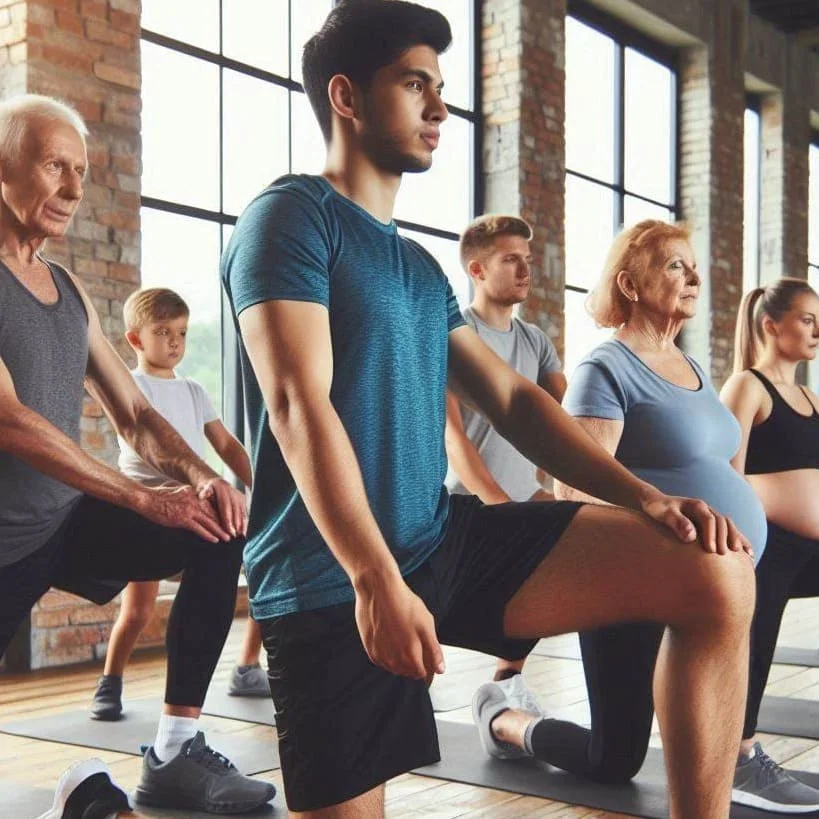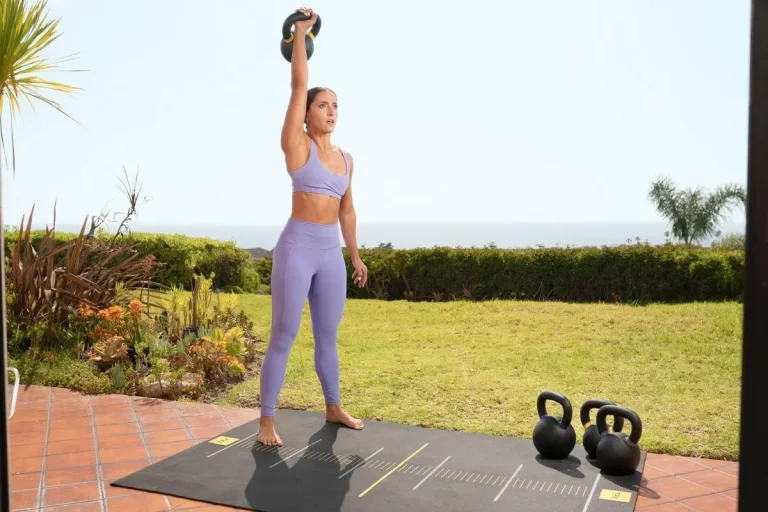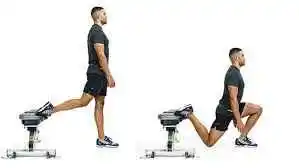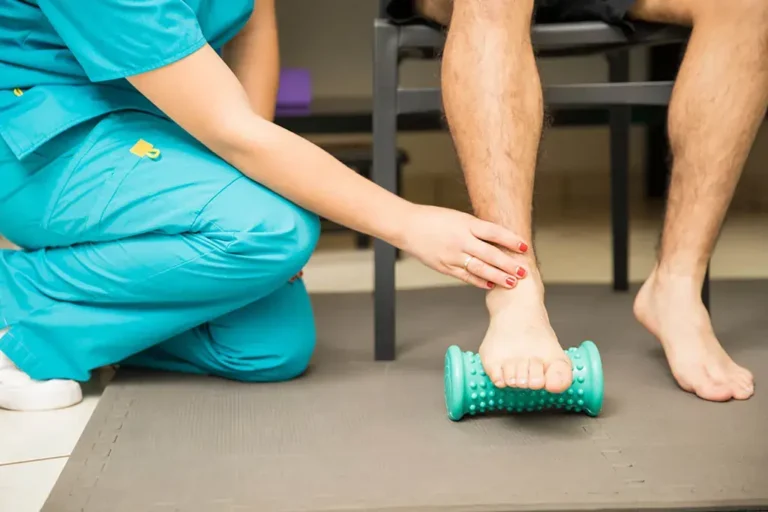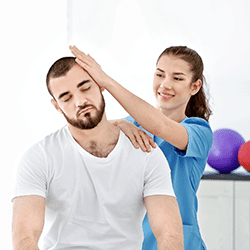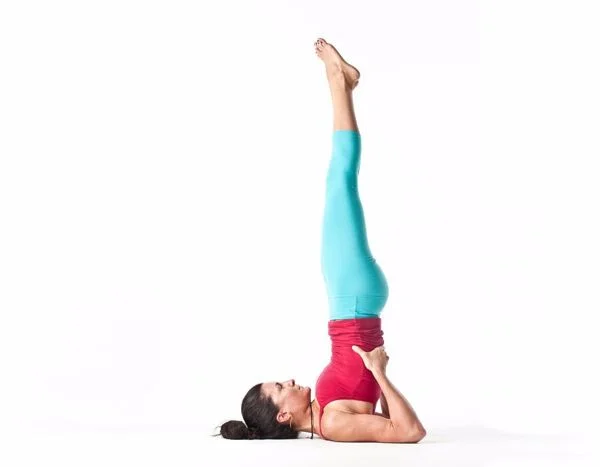31 Best Vastus Lateralis Exercise
Vastus Lateralis Exercise is essential for strengthening one of the key muscles in the quadriceps group, located on the outer part of the thigh. This muscle plays a critical role in extending the knee, supporting leg movements, and maintaining overall lower body strength.
Engaging in exercises that target the vastus lateralis can improve athletic performance, enhance muscle balance, and reduce the risk of knee-related injuries.
Overview
- The vastus lateralis is the quadriceps’ largest muscle, so it’s important to target it when doing leg exercises. This muscle, found on the outer thigh, can make your legs appear wider and larger.
- In this article, we’ll focus on the vastus lateralis, providing 7 of the best exercises and tips for specifically targeting it, as well as 5 vastus lateralis stretches to incorporate into your training routine.
- It is located on the outer thigh. The Latin words Vastus, which means great, and Lateralis, which means lateral side, are the source of the name of the vastus lateralis muscle.
- It joins the other quadriceps muscles in the quadriceps tendon, which extends over the knee and connects them to the tibia. It forms the lateral wall of the thigh alongside the iliotibial band.
- Regardless of training objectives or athletic discipline, the muscles of the legs are regarded as one of the most important parts of the body to develop.
- The vastus lateralis, a muscle located on the outside of the thigh, is an important component of said muscles because it helps to stabilize and execute movement about the knee joint.
- To train the vastus lateralis, resistance exercises that target the greater quadriceps femoris will be required.
- While split squats and lunges are good starting points, more advanced exercisers may prefer exercises with more specificity, such as leg extension and narrow stance squats.
What Is Vastus Lateralis ?
- The vastus lateralis, also known as the “quad sweep” by bodybuilders, is a portion of the four-headed quadriceps femoris muscle located atop the thighs.
- Because of its position and size, the vastus lateralis is regarded as one of the strongest and most aesthetically important muscles in the lower body.
- Unfortunately, it is not possible to completely isolate the vastus lateralis because the entire quadriceps functions as one unit.
- Instead, exercises can be performed with the vastus lateralis emphasized, allowing for more volume to be placed there.
Anatomy Of Vastus Lareralis
Origin
- femur
- lateral part of the intertrochanteric line.
- the margin of the greater trochanter.
- the lateral border of the gluteal tuberosity.
- lateral lip of Linea Aspera
Insertion
- The quadriceps tendon
- lateral margin of the patella
Action: extend the leg.
Arterial supply: lateral circumflex and deep femoral arteries
Innervation: femoral nerve (L2–L4)
Function as a muscle
The vastus lateralis is the strongest member of the quadriceps muscle group, and it works in tandem with the vastus intermedius, medialis, and rectus femoris to extend the knee joint.
Can you Isolate the Vastus Lateralis?
- It is not always possible to target as well as isolate the vastus lateralis muscle when performing leg exercises. However, there are some tips and tricks that can help you target it more effectively.
- To better target this quad muscle during various pressing exercises, keep your knees closer together and push inwards while avoiding allowing your knees to open.
- Another tip is to point your toes inwards while performing exercises like leg extensions, which puts more strain on the outer thighs
There are two types of exercises for the vastus lateralis muscle:
- Stretching
- Strengthening.
Vastus Lateralis Muscle Stretching exercises
- Vastus lateralis muscle Stretching exercise: After 2-3 days of electrotherapy for muscle pain, physiotherapists may recommend stretching to relieve muscle tightness.
- This stretching is done after your pain has been relieved and you are comfortable.
- This stretching exercise helps release muscle pain and tightness.
Vastus Lateralis Stretch
- How to Perform this Exercise: This stretching exercise Begins in a high lunge position, with your left foot forward.
- Then, carefully lower your right knee joint to the floor and take a moment to balance.
- When you’re ready, reach back with your right arm to grab your ankle or toes.
- grasp this stretching position for thirty seconds. while keeping the body steady.
- Then gradually return to the lunge position, switching from the left foot to the right foot.
- Perform this stretching exercise three times at once and three times per day.
Kneeling Quad Stretch
To make this stretch more difficult, tilt your pelvis back while keeping your chest upright and lean into the hip. Another variation is to twist at the hips and reach back to grab the opposite foot.
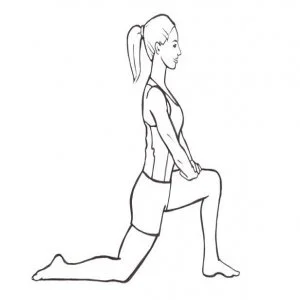
How to Perform the Kneeling Quad Stretch:
- Kneel on your left knee at a 90-degree angle, with your left foot behind you.
- Grab your foot behind you, and gently push it away from the center of your body.
- Drive your hip forward, keep your back straight, and lean forward.
- Hold for thirty seconds.
- Repeat with the other leg.
Side Lying Quad Stretch
This not only stretches your quads but also lengthens your hip flexors, which are notoriously tight in many people.
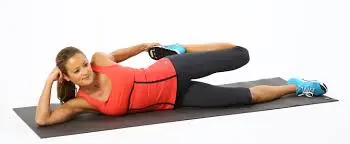
How to Perform the Side Lying Quad Stretch:
- Lie on your side.
- Bend your upper leg’s knee and move your foot behind you.
- Reach back and grab your foot.
- Pull gently towards you, pushing your hips forward.
- Hold this for thirty seconds.
- Repeat with the other leg.
Hero Pose
The hero pose is simple yet effective. Hold it for at least thirty seconds in order to effectively lengthen your quadriceps.
How to Perform the Hero Pose Stretch:
- Kneel on the ground, knees together, feet separated behind you, toes facing in.
- Sit back into the area between your feet and lean back slightly. Use your arms to brace yourself.
- Hold the position for a few seconds.
- Slowly return to the starting position.
Hands And Knees Quad Stretch
To perform this stretch effectively, you’ll need some balance and coordination, but believe us when we say it’s well worth it. You’ll feel a deep stretch in your Vastus Lateralis.
How to Perform the Hands as well as Knees Quad Stretch:
- Get on your hands and knees!
- To raise your leg behind you, flex your knee.
- Reach back and grab your ankle, pulling your heel towards your glutes.
- Hold for thirty seconds.
- Slowly return to the starting position.
- Repeat with the other leg.
Standing Quad Stretch
Sometimes the most basic stretches are the most effective. If you need extra balance, stand near a wall and lean on it for support.
How to Perform the Standing Quad Stretch:
- Stand with your feet hip-width apart.
- Reach down behind you, grab your foot, and bring it up behind your glutes
- Pull gently
- Hold for 10- 20 sec.
- Repeat with the other leg.
Vastus Lateralis Muscle Strengthening Exercises
- After the physiotherapist has administered electrotherapy and massage for 2 -3 days to relieve muscle pain, the therapist will recommend strengthening exercises to relieve muscle weakness.
- This strengthening exercise is always recommended when you want to relieve pain and feel comfortable.
Leg Extension (TOES-IN)
Leg extensions are a staple in many gym workouts, and for good reason! This machine builds killer quads and is an excellent vastus lateralis exercise.
How to Do Leg Extensions:
- Sit down on the leg extension machine and position the pad over your ankles
- Rotate the toes inward.
- Fully extend your legs at the knee.
- Slowly lower to the starting position.
- Repeat for the desired number of reps.
Close Stance Leg Press
This is a versatile piece of gym equipment because you can change the leg press foot placements to target different muscles. To hit your vastus lateralis, keep your legs close together while performing the narrow stance leg press.
How to Perform:
- Sit on the leg press machine.
- Place your feet on the platform, slightly closer than hip-width apart.
- Press your heels into the platform and perform knee extension until your legs are nearly fully extended.
- Slowly return to the starting position.
- Repeat for the desired number of reps.
Note: Keep your toes off the platform throughout the movement to effectively target the vastus lateralis.
Dumbbell Lunges
As long as you have a set of dumbbells, you can easily incorporate this lunge variation into your at-home workout.
How to do dumbbell lunges:
- Grab dumbbells with both hands and use a neutral grip.
- Standing with feet hip-width apart, step forward with one leg while bending the front knee.
- Lower your knees to 90 degrees, with your back knee just above the ground. Then, push off with your front foot’s heel to return to the starting position.
- Switch sides.
- Repeat for the desired number of reps.
MACHINE HACK SQUATS
If you have access to a gym with a hack squat machine, make sure to include it in your leg day workout. If you don’t have this equipment in your gym, check out the Best Hack Squat Alternatives.
How to Perform the Machine Hack Squat:
- Position yourself with your feet hip-width apart on the hack squat machine.
- After releasing the safety grips, bend your knees to a 90-degree angle and gradually lower them.
- Push through your heels until you reach the starting position.
- Repeat for the desired number of reps.
SISSY SQUAT
Despite its name, the sissy squat is not an easy exercise! A prop can help you stabilize during the movement, but as you progress, you should be able to avoid using one.
How to Perform the Sissy Squat:
- Stand with feet shoulder-width apart.
- Raise up on your toes, pointing forward, and place your hands on a prop to help with stability.
- Bend at the knees and tilt your body backward, lowering into a squat as far as you can without losing balance.
- Hold at the bottom for up to three seconds.
- Using the balls of your feet, raise yourself back up to the starting position.
- Repeat for the desired number of reps.
FRONT SQUAT
We will go over the barbell variation here, but you can also perform the front squat with dumbbells. Simply hold the dumbbells in front of you and place them on the front of your shoulders while performing this move.
How to Perform the Front Squat:
- Get under the bar. Hold the bar in front of you with your elbows bent, palms facing away from you, resting it on your upper chest, or with your arms folded across your chest and the bar resting across the front of your shoulders.
- Stand with your feet hip-width apart, engage your core, and lower down into a squat position until your thighs are parallel to the floor.
- Until you get to the beginning posture, push up through your heels.
- Repeat for desired.
DUMBBELL BULGARIAN SPLIT SQUAT
Prepare to feel the burn from the Bulgarian split squat! Don’t go too heavy with the weights; proper form and foot placement are more important.
How to Perform:
- Stand one step in front of a platform (chair or bench).
- Grab dumbbells with both hands and use a neutral grip.
- Reach back with your left leg and place the top of your foot on the platform behind you.
- Standing straight, slowly lower your left knee until it is near the ground.
- Push up through your front foot until you return to the starting position.
- Repeat, then switch sides.
Lying Pigeon Progression
- To perform the Lying Pigeon Progression: first place a mat on the floor and lie face down.
- Then, secure a resistance band around the affected foot, keeping the excess band in a reachable area.
- Grab the band with the left hand while keeping the right leg extended or bending the left knee joint.
- Keep your feet pointed toward the ceiling.
- Then, use the resistance band to pull forward until you feel a stretch.
- Hold this exercise position for ten seconds.
- Perform this strengthening exercise ten times in one session and three times per day.
The frog pose
- How to Perform this Exercise: This exercise begins by lying on your stomach in a prone position and propping your torso up on your elbow joints.
- Bend both knee joints and reach back to hold your feet.
- You can feel the stretch at this point.
- Then, adjust your fingers to point in the same direction as your toes, and slowly lift your elbow joint to point to the ceiling.
- Raise your chest as high as possible.
- When you feel pain in your hip or knee joint, stop doing this exercise immediately.
- Hold this exercise position for ten seconds.
- This strengthening exercise should be performed three times a day and ten times in a single session.
Floor Extension
- How to Perform this Exercise: You’re sitting on the floor with a tall posture.
- Pull your shoulder joint down the back, keeping your chest proud.
- Then Bend your left knee joint in toward your chest, keeping your left foot flat on the floor.
- Extend your leg in front of you, your foot pointing slightly to the side.
- Hold under the left knee joint with both hands interlocked, and keep your muscles flexed throughout the exercise.
- Do the Exhale. Lift the right leg as high in the air as possible while maintaining your posture and leaning away from the wall.
- Hold this position for ten seconds.
- Then, inhale and slowly lower yourself to your starting position.
- Repeat the strengthening exercise 10 times in 1 time & do the 3 times per day.
Lateral heel drop
- How to Perform this Exercise: You are standing tall, your left leg straight but not locked, and your foot rests on a small step.
- Bend your right knee slightly and keep your left foot flat on the floor.
- Your right knee joint must cross over your toes.
- Then Squeeze your core muscles to maintain balance.
- Exhale and push up from the right leg until both legs are fully straightened.
- Inhale, contract your left vastus medialis muscle and slowly return to your starting position.
- Hold this exercise position for ten seconds.
- This strengthening exercise should be performed three times a day and ten times in a single session.
Step Downs
- How to Perform this Exercise: You’re standing with your right foot on the step and your left foot off to the side.
- Inhale and flex the vastus medialis muscle.
- Then bend your right knee joint so that your left foot is flat on the ground.
- Must be Again, try to maintain your hip joint level at all times.
- Exhale and engage your core muscles.
- Then push off your foot and return to the starting position.
- Hold this exercise position for ten seconds.
- This strengthening exercise should be performed three times a day and ten times in a single session.
Leg Extension
- How to Perform this Exercise: You sit in a chair and scoot to the front of the seat.
- Then, wrap a resistance band around your ankle joint and feed it under the chair, reaching back and grabbing it with your hand.
- Exhale, and then slowly extend your leg to full extension in front of you.
- Then inhale, contract your muscles, and slowly lower the leg back to 30 degrees.
- Hold this exercise position for ten seconds.
- This strengthening exercise should be performed three times a day and ten times in a single session.
Single-leg raises
How to Perform:
- With your knees bent and your feet flat on the mat, you are resting on your back.
- A weighted ankle should be placed on your thigh while you completely extend your right leg in front of you.
- Squeeze your core muscle, contract the vastus medialis muscle, and lift the right leg about 2 inches off the mat.
- This exercise requires keeping the leg elevated for the entire duration.
- Make sure you’re not arching your spine.
- You do not leave any space between the back and the mat.
- Hold this exercise position for ten seconds.
- This strengthening exercise should be performed three times a day and ten times in a single session.
Terminal knee extension (TKE)
- How to Perform this Exercise: Tie a resistance band around a sturdy anchor and slide the other end up to just above the back of your right knee joint, facing the anchor.
- Step back until the band is taut.
- Then Straighten your left leg and keep your right knee slightly bent.
- Exhale, then push your right knee back to match your left knee joint, exaggerating the contraction in your vastus medialis muscle.
- Hold this exercise position for ten seconds.
- This strengthening exercise should be performed three times a day and ten times in a single session.
Vastus Lateralis Activation Exercise
- How to Perform this Exercise: You are sitting upright in a chair, with your knees bent.
- Place the ball between your knees and your feet flat on the floor.
- Then Place your thumbs on the soft, squashy area on the inside of the knee joint, just above your kneecap (patella), and press down firmly.
- Next, clench your glutes and give the ball a light squeeze.
- Make sure the movement originates in your knee joint rather than your inner thigh.
- If you don’t think stretching is necessary, try clenching your buttocks, clenching your knee joint, and squashing the backs of your thighs down into the chair.
- Hold this exercise position for ten seconds.
- This strengthening exercise should be performed three times a day and ten times in a single session.
Ball Clench Extensions
- How to Perform this Exercise: You are lying on your back, with a rolled-up towel beneath your knee joint and the ball between your knees.
- After that, clench your buttocks, grasp the ball lightly, and raise one heel off the floor to straighten your knee joint.
- Keep clenching the ball and holding for 10 seconds before slowly returning to the starting position.
- This strengthening exercise should be performed three times a day and ten times in a single session.
Twisted Leg Raise
- How to Perform this Exercise: You’re lying on your back, with one leg straight and the other knee bent.
- It relieves tension in the lower back while you work the straight leg.
- Turn your foot outwards about 20 degrees in external rotation, then lift it until your thighs are parallel.
- Hold this exercise position for ten seconds.
- This strengthening exercise should be performed three times a day and ten times in a single session.
- Keep your leg turned outwards during this exercise to activate the vastus medialis muscle.
Ball bridges
How to Perform this Exercise
- With your feet hip-distance apart and your legs bent, you lie on your back.
- Position the ball between your knee joints.
- Then clench your glutes and gently squash the ball.
- Lift your bottom to the highest point possible without arching your back.
- Hold this exercise position for ten seconds.
- This strengthening exercise should be performed three times a day and ten times in a single session.
Ball wall squats
- How to Perform this Exercise: You’re standing with your back against a wall and a squashy ball between your knee joints.
- Heels must be placed about 6? away from the wall, with toes pointing forward.
- Clench your glutes and gently squash the ball to activate the vastus medialis muscle, then slowly slide down the wall while bending your knee joints.
- Hold this exercise position for ten seconds.
- This strengthening exercise should be performed three times a day and ten times in a single session.
Isometric contraction of the vastus lateralis muscle
- How to Perform this Exercise: You Sit on your bed or the floor with your legs straight out and a towel under your knees.
- Flex your quadriceps muscle with your hip joint/leg slightly externally rotated.
- Hold this contraction for 10 seconds, then place your fingers on your vastus medialis muscle to ensure it is activated and firing.
- This strengthening exercise should be performed three times a day and ten times in a single session.
- Seated Isometric Vastus Medialis Muscle and Adduction:
- Your feet are hanging freely while you sit on a platform and chair.
- Place a ball between your thighs and squeeze it together to activate the vastus lateralis muscle.
- Hold the muscle contraction for 10 seconds.
- Repeat this strengthening exercise ten times in one session and do the 3 times per day.
Externally Rotated Half Squats
- How to Perform this Exercise: You’re standing with your legs shoulder-width apart and your knees and feet externally rotated.
- Squat halfway down and come up slowly, focusing on activating the vastus medialis muscle to return to a standing position.
- Perform this strengthening exercise ten times in one session and three times per day.
Wall/ball squats
- How to Perform this Exercise: You are leaning against the wall while holding a Swiss ball.
- Then Slowly squat down to a near-seated position with your thighs parallel to the ground.
- Slowly get back up and avoid locking your knee joint.
- This strengthening exercise should be performed three times a day and ten times in a single session.
Split squats or static lunges
- How to Perform this Exercise: This exercise requires you to stand with your feet shoulder-width apart and take one large step forward.
- You can put your hands on your hip joint.
- To make this exercise more difficult, hold dumbbells by your side.
- Maintaining an erect stance, lunge down and up while preventing your front knee joint from moving in front of your big toe.
- But concentrate on using your front heel to support most of your weight and try not to allow your knee to buckle
- This strengthening exercise should be performed three times a day and ten times in a single session.
Step-Ups
- How to Perform this Exercise: You are Standing in front of a bench and chair.
- Step onto a platform and drive with your glutes rather than your toes.
- Make sure your knee joint isn’t buckling inward.
- It is forced or pushed out.
- Then Step down slowly, ensuring that your knee joint remains stable.
- This strengthening exercise should be performed three times a day and ten times in a single session.
Foam rolling the quadriceps
Fascia is the thin layer of fibrous tissue that surrounds your muscles. Each muscle is connected to its neighbor and separated from it by fascia. It is possible for the fascia to get “gummed up,” which causes tense, aching muscles. Trigger points, reduced blood flow, and diminished function may result from this.
Self-myofascial release, or foam rolling, is a form of self-massage that can help you relax tight fascia and regain your range of motion. The mobility and function of your hip and knee joints are enhanced when you foam roll your quadriceps.
How to Perform this Exercise:
- Lie on your front on the foam roller. The ideal place for the roller is beneath your thighs. Shift your weight across, emphasizing one leg at a time. Bend the knee on the leg you intend to work on.
- Roll back and forth on your thigh. Turn your leg in and out to target all sides of your quads.
- Look for any spots where you feel tightness and continue to work on them until they start to go away.
- Apply more pressure by crossing your other leg over the one you’re treating.
- Continue for 2-4 minutes, then switch sides.
Benefits of Vastus Lateralis Exercises
Strong and healthy leg muscles, including the vastus lateralis, provide numerous benefits. We rely on our legs to carry us around daily, so it only makes sense to properly exercise and stretch the quadriceps.
- Makes your legs appear wider and fuller.
- Promotes improved knee stability.
- Improves joint health and stimulates growth hormones.
- maintains good bone health
- Helps you burn more calories.
Note: that foam rolling can be painful. That being said, following foam rolling sessions should get easier as the adhesions start to disintegrate. Increase the pressure gradually to avoid causing unnecessary pain.
FAQs
What is the function of the vastus lateralis?
The muscle is one of four quadriceps muscles and the largest in the group. The vastus lateralis muscle collaborates with the other quadriceps muscles to help extend the knee joint. It also helps to maintain proper thigh and kneecap positions while walking and running.
What Happens When You Have a Weak Vastus Lateralis?
If you have a weak vastus lateralis, it can impair the function of the other thigh muscles, limiting mobility and walking and increasing the risk of muscle strain and injury.
Where is the vastus lateralis?
The vastus lateralis muscle is located on the lateral side of the thighs. This muscle is the largest of the quadriceps, consisting of the rectus femoris, vastus intermedius, and vastus medialis.

